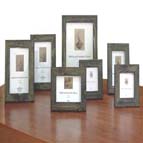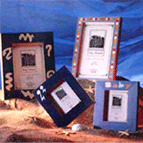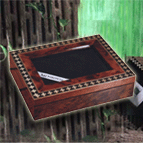 |
||||
|
|
||||
|
||||
| The Beginning Story Of Inlay | ||||
|
Before the 16th century, during the period of the Tudors, inlaid
decorations could already be found on the vertical piano. In the early
part of the 16th century, German craftsmen had begun applying the inlay
techniques on buildings and furniture. By the 17th century, the techniques of the furniture craftsmen were more delicate. The wood skin of walnut wood became the most popular style for inlaid decoration. British craftsmen started applying the inlays on fine furniture, closets and tables during this period. The wooden inlay decoration of various colors and ivory was sliced and inlaid by hand into the wood skin, mounted on wood chips, and inserted with great care into the wooden piece itself. Around 1660, a most important development in decoration was the Arabesque Flower, often called "seaweed". These decorations were influenced by the floral paintings from the Netherlands, in which flowers were depicted as sprouting from a pot instead of within a wreath or from a blossom. Inlay is an historical decoration. Various decorative patterns are cut from the thin slices of precious woods, combining the most prevailing natural colors and structural grains of the woods. A carefully selected and executed design using techniques of the master craftsmen provides us with the sensitive characteristic and classic elegance of inlay decoration. |



